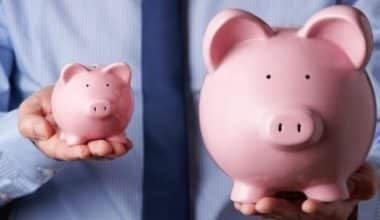If you’re a real estate investor or want to start investing, you’re certainly always on the lookout for great discounts on houses to flip or rent out. A property may be immediately obvious as a good investment if you have extensive knowledge of the local market. However, a more sophisticated method based on measurements will be required as your holdings expand. Real estate investors place a high value on the capitalization rate (cap rate) as a tool for determining the value of a rental or income property and identifying promising investments. The capitalization rate (cap rate) is useful for determining if a property is a worthwhile investment. This piece will show us how to calculate the cap rate in real estate, rental property, and income property.
What is Cap Rate?
The capitalization rate (or Cap Rate for short) is a term used in real estate to describe the rate of return on a property based on its net operating income (NOI). In other words, the capitalization rate (Cap Rate) is a return metric used to calculate the prospective return on investment or capital payback.
This metric is based on the predicted net income from the property and is determined by dividing the net operating income by the asset value of the property to give a percentage. In the real estate market, it is used to predict how much money an investor might make.
Although the capitalization rate (cap rate) is a quick way to compare the market value of different real estate investments, it should not be used as the only indicator of a strong investment because it does not account for leverage, the time value of money, or future cash flows from property improvements.
Which Factors Determine the Cap Rate?
The cap rate is merely one factor to consider when you want to calculate a property’s risk. When deciding whether or not to invest in a commercial property, it is important to consider the property’s surroundings. The risk and return on an investment are affected by the property’s location, condition, and type. You can better determine if the commercial property is suitable for your needs after getting the full picture.
#1. Rent Growth
During times with higher inflation, rent increases may be larger, especially in rentals with shorter lease terms. Higher interest rates can be offset by the expectation of rising rents and higher NOI. Rent growth can be stifled and cap rates forced higher if the economy were to worsen. Gilbert noted that despite rising interest rates, cap rates have remained largely steady into the second quarter of 2022 because of robust growth in apartment and industrial rents.
Recently, rent increases have tapered somewhat. Whether this stop is short-lived or the beginning of a trend in response to the Federal Reserve’s deliberate slowing of the economy remains to be seen.
#2. Location
The proximity to the city’s job core, major thoroughfares, and public transportation all have a role in determining cap rates. Capitalization rates tend to be lower in high-demand and stable areas and higher in transitional and fringe areas due to greater employment volatility and more erratic demand. Tenant turnover, lease expenses, and other factors that affect operating cash flows may increase as a result.
#3. Gross Domestic Product (GDP) and Unemployment
The GDP and the unemployment rate are both indicators of the state of the economy. Commercial real estate investments have lower cap rates when GDP is strong and unemployment is low. Investment properties are riskier in times of low GDP and high unemployment. Keep in mind, however, that cap rates are often predictive in nature, and that specific transactions are influenced by factors like as a building’s individual prospects and an investor’s perspective, in addition to market and economic conditions.
#4. Asset Class
Cap rates are not uniform across asset categories. The lowest cap rates are often seen in the multifamily and industrial real estate sectors. Several economic indicators may have varying significance depending on the type of asset being measured. Multifamily and retail properties are highly sensitive to changes in disposable income, while industrial properties are more sensitive to changes in expenditure on both durable and nondurable items.
What Is the Formula for a Cap Rate?
The formula for determining the rate of capitalization comes in a few different flavors. The most often used method to calculate a real estate investment’s cap rate is to divide the property’s net operating income (NOI) by its current market value. Mathematically,
Cap Rate = Net Operating Income / Current Market Value
where,
As the name implies, net operating income is the money made from the property after deducting all the costs associated with running it. Among these outlays is the money needed to cover routine maintenance and property taxes for the building.
The value of an asset at the time of valuation according to market conditions is its current market value.
One alternative is to use the purchase price or initial investment price of the asset in question.
Capitalization Rate = Net Operating Income / Purchase Price
However, there are two main reasons why the second edition is not quite as popular as the first. Second, it cannot be used for the inheritable asset because the purchase price is zero, which makes the division impossible. The first problem is that it produces implausible results for old properties that were purchased several years/decades ago at low prices.
Also, the first version, which utilizes the market price at the time, is a more accurate representation than the second, which uses the fixed value of the original purchase price because real estate prices tend to rise and fall over time.
In addition, one option for those curious about cap rates is to enroll in an excellent online real estate program.
How to Calculate Cap Rate
The capitalization rate (cap rate) is a key indicator in the property investment industry. Divide the property’s annual net operational profit by the purchase price or current market value to get the cap rate. For investors, a greater cap rate is preferable to one with a lower rate. Here are simple steps to calculate the cap rate.
#1. Understand the Concept of Cap Rate
The capitalization rate, or “cap rate,” is a way to calculate the profitability of a rental property. It represents the property’s current market worth as a percentage of its annual net operating income.
When the capitalization rate is higher, the return on investment (ROI) is also higher. It is essential to keep in mind that the cap rate is merely a projection of the possible rate of return and is in no way a guarantee of the property’s future performance.
#2. Determine the Property’s Net Operating Profit
You must first understand how to compute NOI (net operating income). The net operating income (NOI) is calculated by deducting the total operating expenses from all property revenues.
Income from the property might come from a variety of sources, including rent, user fees, and the sale of onsite goods and services. Consider, for instance, the case where, in the absence of any other sources of revenue, the rental income from a given property amounts to $5,000 per month.
The costs associated with the property will next be tallied. Taxes, insurance, maintenance, and legal fees are all obvious areas to budget for. However, less evident costs, such as possible vacancies, should also be included in. The national average for vacancies among investment properties is 10%, but you can perform research in your area to get a more precise figure. Total monthly expenses for the property under consideration are $1,000, and this amount takes into account a 10% vacancy rate.
You may calculate the property’s net income by deducting operating expenses from gross income. The NOI will be calculated after that. In addition, the property generates a monthly net operating income of $4,000, or $48,000 annually.
#3. Using current Market Price as a Denominator
Next, we’ll take the after-tax profit from operations and divide it by the stock price at the moment. The majority of investors utilize the property’s current market value even though there is considerable controversy as to whether the purchase price or current market value should be used.
Therefore, we will use the standard method, which is to divide the net operating income by the current market value. The property’s current market value might be determined by perusing the property facts and using any one of the numerous online house valuation estimating tools.
The property’s current market worth is $480,000, as shown in our example. That’s enough to get us to $40,000 via division, or 0.10.
#4. Determine the Capitalization Rate
It is therefore possible to calculate the cap rate after the NOI and market value have both been established. To calculate the cap rate in the form of a percentage, first divide the net operating income by the market value, and then multiply the resulting number by 100.
#5. Conduct an Analysis of the Results
The final action is to conduct an analysis of the results. A capitalization rate that is high suggests that the potential return on the investment is high, whereas a cap rate that is low may indicate that the prospective return is poor.
However, it is essential to keep in mind that the cap rate is just one of several aspects that go into calculating the possible return on investment. This aspect, along with others such as the location, the state of the property, and the trends in the market, should be taken into consideration.
What Is a Good Cap Rate?
The search for a “good” cap rate that applies to all properties is understandable, but the market is too specific to yield a single value. Instead, investors can utilize the cap rate to decide if the property is suitable for them based on their own risk tolerance.
Properties that generate more in operational revenue but are valued at less will have a higher cap rate determined by the algorithm. Conversely, a lower cap rate is associated with assets that have a greater valuation but a lower net operating income.
Less risky for investors, but with a longer time horizon to repay their money, are properties with a lower cap rate. As a prudent investor, you should carefully weigh the pros and downsides of various capitalization rates before settling on one. If you have a certain amount in mind, it will be much easier to eliminate properties that present too great of a danger.
Who Is the Cap Rate Important To?
To a real estate investor looking for a new asset, a high cap rate is obviously a good sign. However, for the vast majority of buyers, the difference between a high and low cap rate is meaningless. Since they aren’t planning on renting the home out, they’ll be more concerned with its market worth. Buyers typically look for deals that would allow them to earn a profit upon resale.
But the current market value of a property is important, as is its operational income (which is the revenue less the expenses) to an investor.
It’s possible that investors might like to keep the property for the rental revenue it provides. When comparing properties with similar annual net operating income, the capitalization rate is useful in determining which one is the best investment.
A property’s NOI (net operating income) and cap rate are essential metrics for future buyers and mortgage lenders to consider when evaluating a loan application. The cap rate may influence financing factors including interest rate and lender interest in extending a loan.
What Is a Cap Rate in Real Estate?
A cap rate in real estate is a metric for comparing the profitability of various commercial or residential real estate investments. One- to four-family residences that are being rented out for commercial or investment purposes are the primary topic of this article.
The capitalization rate of a property is determined by dividing its net operating income (NOI) by its asset value.
Value judgments can be improved with the use of capitalization rates. A real estate investment is measured by several factors, not only the capitalization rate. In addition to the property’s specific features and location, investors should think about the return on investment (ROI), internal rate of return (IRR), and gross rent multiplier (GRM). Also, read Real Estate Cap Rate: What Is a Good Rental Cap Rate In 2023.
When Is a Capitalization Rate Appropriate?
The cap rate has some shortcomings, but it’s nevertheless a useful tool to calculate the profitability of a rental property. It’s important to keep in mind that the cap rate’s applicability differs depending on the area. That is to say, what constitutes a healthy capitalization rate in a metropolitan setting will be different from what constitutes a healthy capitalization rate in a rural setting.
When deciding between multiple potential rental properties or other types of real estate investments, the capitalization rate can be an invaluable tool. The capitalization rate (cap rate) might help you decide which investment is the best option. You may readily compare assets without having to account for variables like purchase price, market value, or rental rate fluctuations.
The cap rate is a useful tool for pattern and trend analysis. To do this, just compile information on property capitalization rates in a certain area and time frame, and utilize it to create a market profile highlighting any shifts in the profitability of real estate throughout that time frame.
Real estate investors and stakeholders might benefit from research on historical and current capitalization rates. Patterns and trends might help you predict the next boom market. If cap rates have been rising recently, you should expect a higher return on investment in that area.
In addition, you must compare rental properties that are similar to your investment property to get an accurate cap rate. If you’re buying a three-story rental home, don’t utilize lesser or larger properties to calculate your cap rate.
How to Use Cap Rate as a Rental Property Investor?
You can calculate a rental property’s worth or measure your own real estate investing success with the help of the cap rate. The portfolio cap rate can be used to spot underperforming investments. Alternatively, you can find out what the typical cap rate is in a specific area, and use it to determine a property’s worth. When comparing two similar homes, the one with a lower cap rate will be worth less.
You should be aware that you can find profitable investments outside of big-cap locations. There could be a lot of potential for growth in a low-cap region. To increase your capitalization rate (ROI) in the coming year, seek out areas where rents are going up. In addition, in a year or two, property values will rise due to the increased cap rate.
The best rental properties will see rent increases and stable operating costs. But if operating costs are rising rapidly, net operating income will rise along with it, reducing the cap rate for the year. Older structures in need of extensive repairs run this risk. Long-term value can be created through acquisition if one can discover and rehabilitate older properties in need of repair.
Importance of Cap Rate in Real Estate Investing
In real estate, the cap rate is a standard measure of performance. It aids those looking to make financial investments by calculating the possible return on a particular piece of real estate. Here is the importance of the cap rate.
#1. Knowing How Much the Property Is Worth
The capitalization rate (cap rate) is a simple but reliable indicator of a property’s worth. It computes a return on investment (ROI) percentage by factoring in NOI and the acquisition price of the property.
Knowing if a property is overpriced or underpriced might assist investors decide whether to purchase it.
#2. Risk and Return Analysis
Investing in real estate can be risky, but the capitalization rate can help you figure out how much. Properties with higher Cap Rates are viewed as riskier investments, whereas those with lower Cap Rates are more secure.
Investors seeking a reasonable trade-off between risk and return may benefit from this data.
#3. Estimating Future Revenue
The cap rate is a forward-looking indicator that investors use to calculate a real estate or rental property’s future income. An investor can use the present Cap Rate to forecast future revenue from a property based on assumptions about a variety of variables, including rent increases, property value, and market circumstances.
In addition, investors that are seeking to make sound decisions can benefit greatly from this data.
#4. Taking Inflation Into Account
The fact that the Cap Rate takes inflation into account makes it a valuable tool for investors who want to shield the value of their holdings from the deteriorating purchasing power of the currency over time.
As inflation increases, the purchasing power of a dollar falls. This can have a negative influence on the return on investment for a property that is being purchased because of the property. Investors can be certain that their returns are adjusted for inflation by employing the Cap Rate, and that their investments will continue to maintain their value over time if they do so.
Conclusion
In conclusion, the fundamentals of capitalization rates, as well as how to calculate and apply them to the analysis of potential investments, are essential knowledge for real estate investors. The capitalization rate, or cap rate, is one measure that can be utilized in conjunction with others, such as cash flow and return on investment, to produce a potent investment decision-making tool.
However, it is essential to keep in mind that the cap rate is only one of many aspects to take into consideration when analyzing a real estate investment and that it should not be depended on completely when making decisions on investments.
It is essential to have a solid understanding of the fundamentals of the cap rate as well as how to calculate and use it effectively in order to make educated and lucrative decisions regarding real estate and rental property investment.
How to Calculate Cap Rate FAQs
What Does 7.5% Cap Rate Mean?
You can expect a 7.5% gross income from your investment or property if its cap rate is 7.5%. Using a cap rate of 7.5%, the annual return on a $150,000 property is $11,250.
What Is 10% Cap Rate?
A cap rate of 10% is equivalent to a multiple of 10. At a 10% capitalization rate, an investor who purchases a $10,000,000 building would anticipate a $1,000,000 annual net operating income.
What Cap Rate Is Too High?
In general, a lower capitalization rate signifies lower risk and lower returns than a higher capitalization rate. Many industry professionals consider 5% to 10% a “good” cap rate, while 4% indicates less risk but a longer ROI.
Similar Article
- WHAT IS SALARY: Meaning vs Hourly, Exempt & Requirements
- 4 Essential Elements Of A Good Cap Table
- CAP RATE: Definition and Uses In Real Estate Investing
- Cap Rate in Real Estate: Investors Guide to Know Capitalization Rates
- GRM REAL ESTATE: Gross Rent Multiplier Explained!
- FIXED ASSET ACCOUNTING; What It Is, Examples, Software and Guide






